Pelican species are some of the most iconic birds in the world and have been featured in literature, folklore, and art throughout history.
They have a unique set of physical characteristics that make them easily recognizable, such as their large bill and long wingspan.
They are also incredibly social creatures, often found in large flocks that can range in size from a few dozen to thousands.
These impressive birds are also renowned for their impressive fishing abilities and have been known to dive beneath the surface of the water to catch their prey.
1. American White Pelican
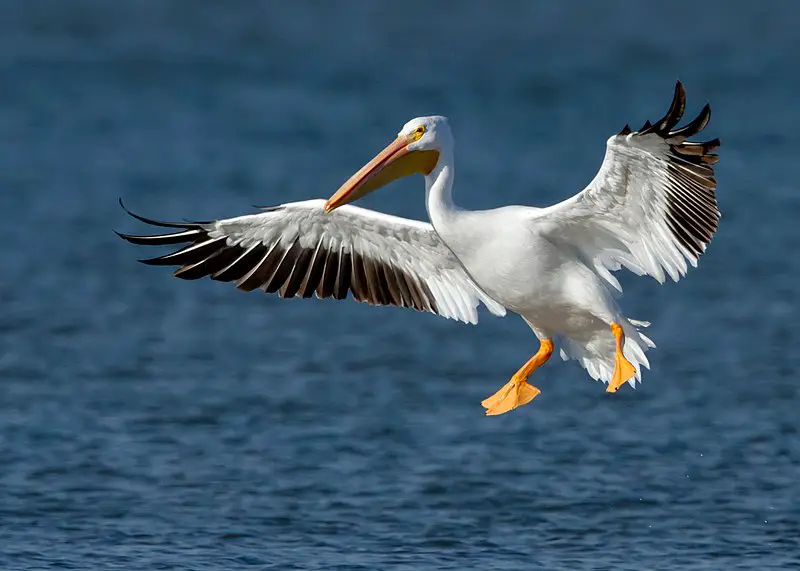
The American White Pelican is a majestic bird from the Pelecaniformes order, known for its impressive size and ability to soar gracefully in the sky.
It breeds during summer months in North America and migrates southwards towards Central and South America during winter.
The species was first described by German naturalist Johann Friedrich Gmelin back in 1789 as part of his updated version of Carl Linnaeus’ work.
This large aquatic bird has an all-white plumage with black primary flight feathers on its wings, while its beak features a characteristic yellowish coloration at the base near the face.
Its diet mainly consists of fish which it typically catches after dipping into water using its long bill; yet sometimes they can be seen stealing food items from other birds such as cormorants or gulls.
Scientific classification:
| Kingdom | Animalia |
| Phylum | Chordata |
| Class | Aves |
| Order | Pelecaniformes |
| Family | Pelecanidae |
| Genus | Pelecanus |
| Species | P. erythrorhynchos |
2. Great White Pelican
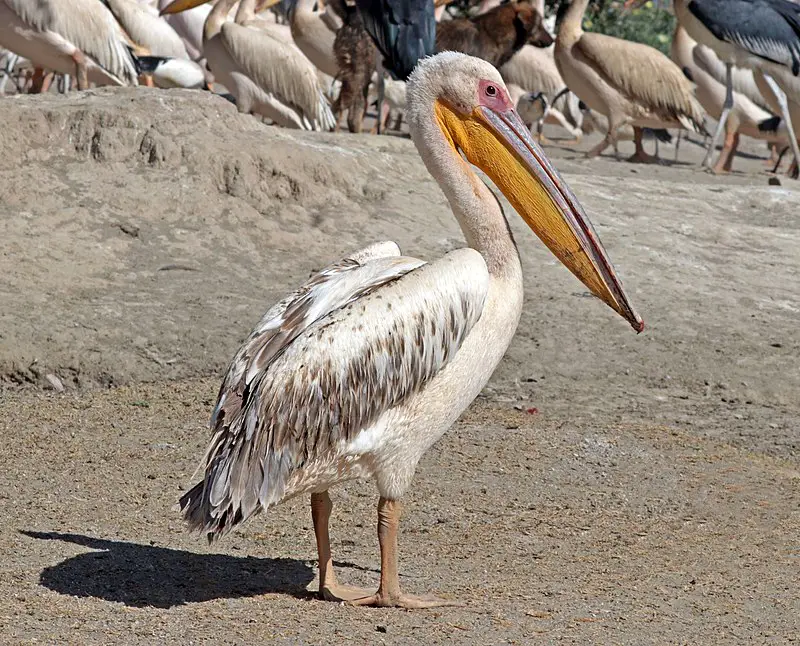
The Great White Pelican is a large bird from the Pelican family that breeds in southeastern Europe, Asia, and Africa. It inhabits shallow lakes and swamps where it can be seen foraging for food with its long bill.
These majestic birds have white feathers on their body, black wings, and tail feathers, along with an orange-colored pouch under their bill.
They are also known to form flocks of up to thousands of individuals when they migrate or gather at breeding sites in search of fish.
The IUCN Red List classifies them as a species of least concern due to stable populations across many regions worldwide.
Scientific classification:
| Kingdom | Animalia |
| Phylum | Chordata |
| Class | Aves |
| Order | Pelecaniformes |
| Family | Pelecanidae |
| Genus | Pelecanus |
| Species | P. onocrotalus |
3. Dalmatian Pelican
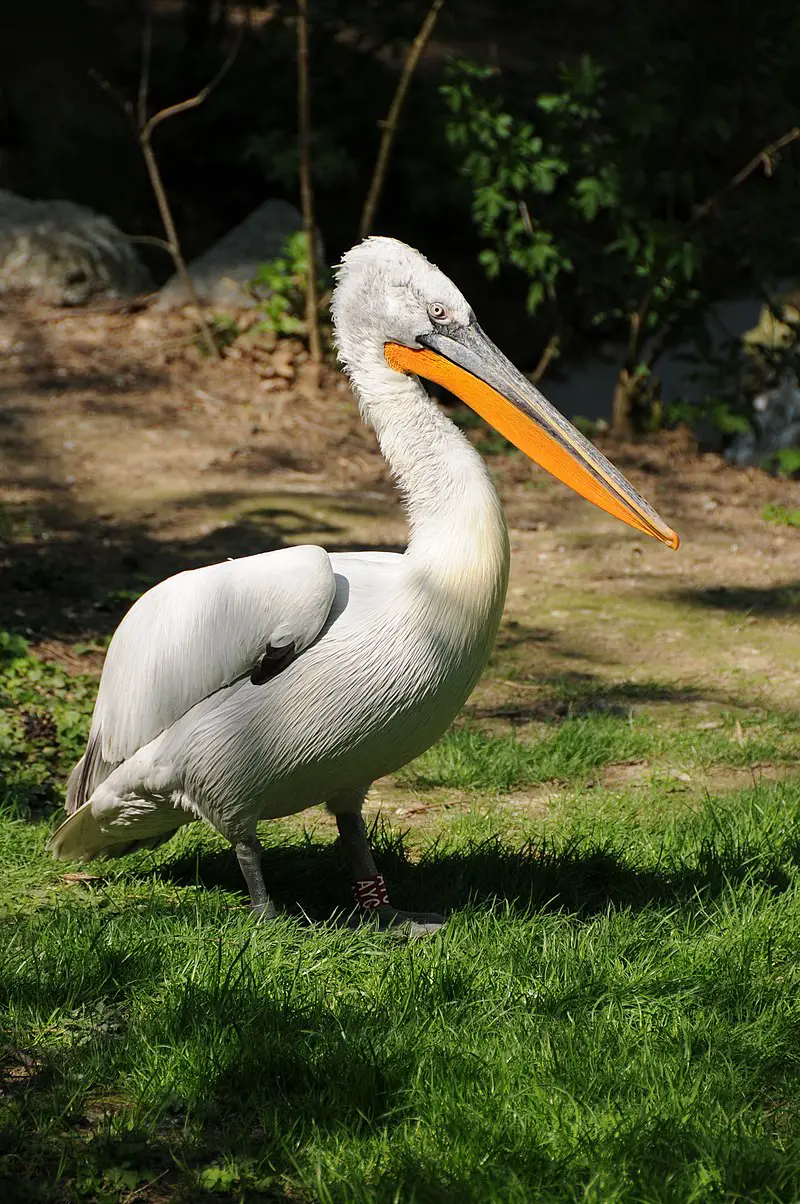
The Dalmatian pelican is an impressive bird, the largest of its family and one of the largest freshwater birds in the world.
Its wingspan rivals even those of albatrosses and it flies gracefully with other members in synchrony.
It has a wide range across Central Eurasia stretching from the Mediterranean to India and Southeast Asia, as well as parts of Russia.
This large species has white feathers which are generally lightly tinged with grey or yellow around their head; they have long beaks that can reach up to 40cm in length.
Their unique physical characteristics make them stand out among other waterbirds – so if you ever get lucky enough to spot one while exploring nature, take some time to appreciate this majestic creature.
Scientific classification:
| Kingdom | Animalia |
| Phylum | Chordata |
| Class | Aves |
| Order | Pelecaniformes |
| Family | Pelecanidae |
| Genus | Pelecanus |
| Species | P. crispus |
4. Australian Pelican
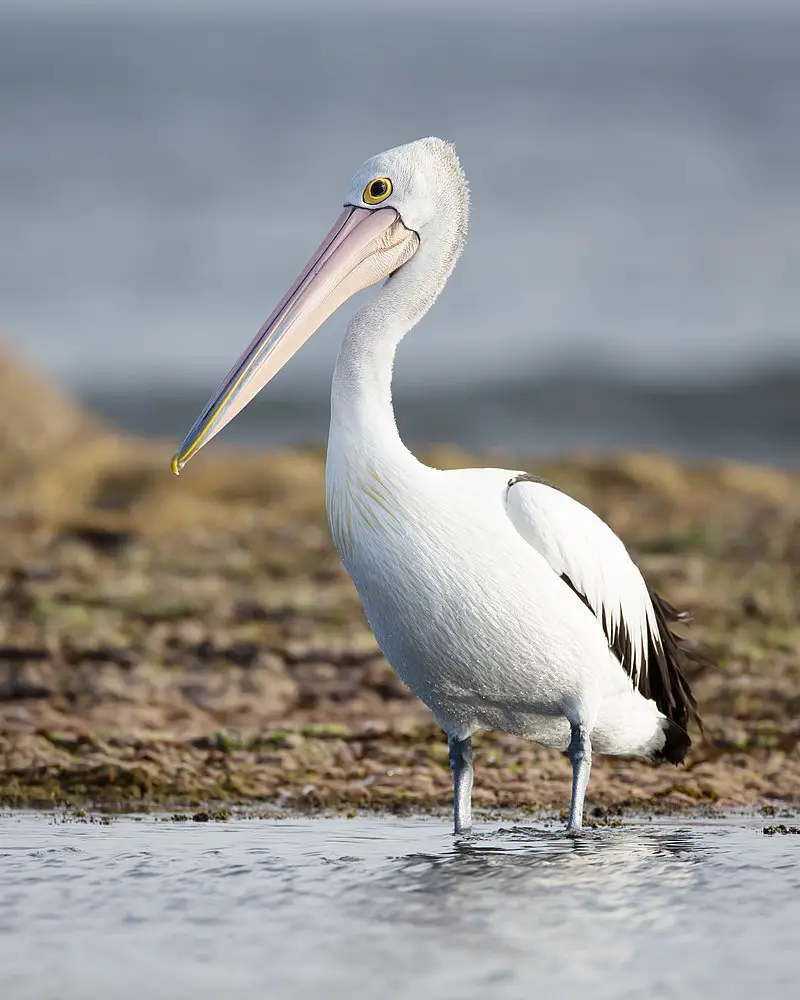
The Australian pelican is a majestic large waterbird with predominantly white plumage and black wings.
It has the longest bill of any living bird, which it uses to fish for its main source of food in both inland and coastal waters of Australia, New Guinea, Fiji, and parts of Indonesia and as a vagrant in New Zealand.
They usually feed together by forming lines or circles around their prey before dipping down into the water at once.
In addition to fishing, they also scavenge from other sources such as eggs from nesting seabirds or carrion.
Their unique appearance makes them an iconic species that can be easily recognised across many areas throughout Australasia making them popular amongst tourists who come to see them up close.
Scientific classification:
| Kingdom | Animalia |
| Phylum | Chordata |
| Class | Aves |
| Order | Pelecaniformes |
| Family | Pelecanidae |
| Genus | Pelecanus |
| Species | P. conspicillatus |
5. Spot-Billed Pelican
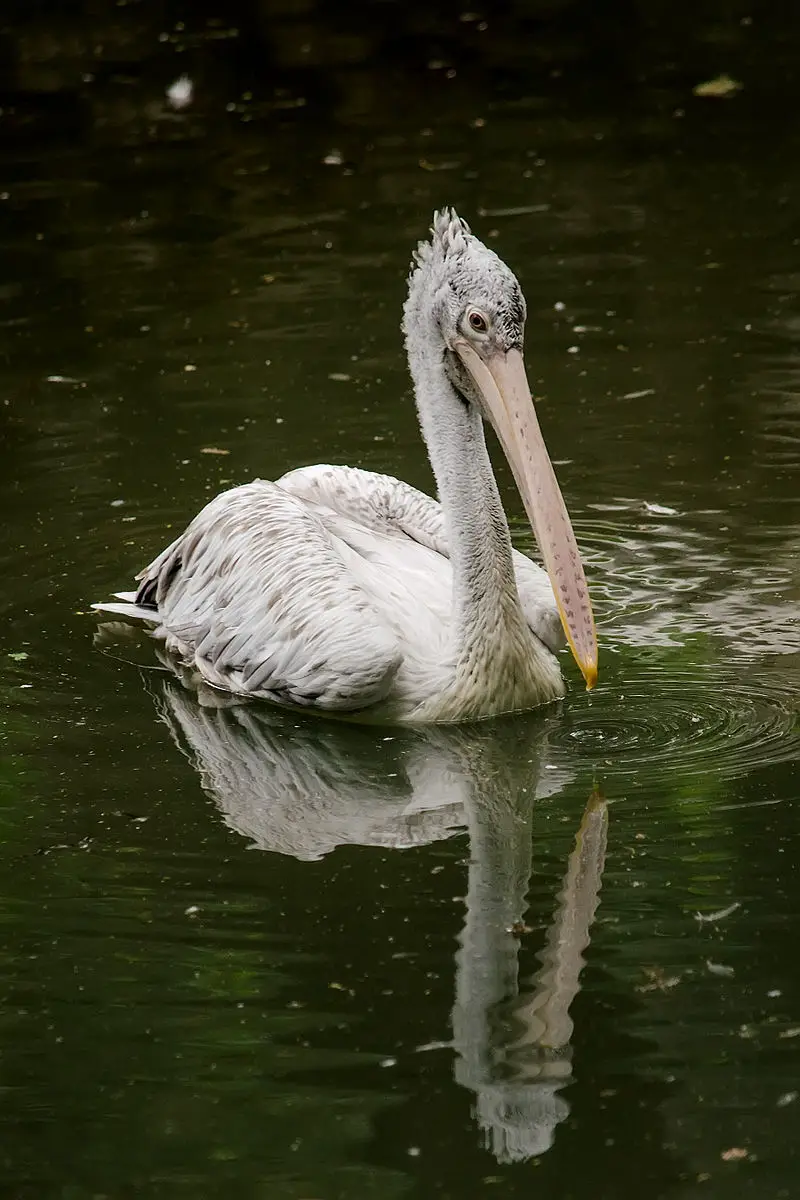
The Spot-billed Pelican is a species of the pelican family that lives in southern Asia, ranging from Iran to Indonesia. It prefers large inland and coastal waters like lakes.
These birds are quite small compared to other types of pelicans, making them difficult to identify from afar but their distinguishing feature is the spots on its bill which can be seen up close.
They feed mainly on fish by diving into water and scooping out prey with their long bills. During breeding season they build nests near bodies of water and lay two or three eggs per clutch.
The spot-billed pelican is an important part of local ecosystems as it helps keep populations of certain aquatic prey down while providing food for larger predators such as raptors and crocodiles.
Scientific classification:
| Kingdom | Animalia |
| Phylum | Chordata |
| Class | Aves |
| Order | Pelecaniformes |
| Family | Pelecanidae |
| Genus | Pelecanus |
| Species | P. philippensis |
6. Pink-Backed Pelican
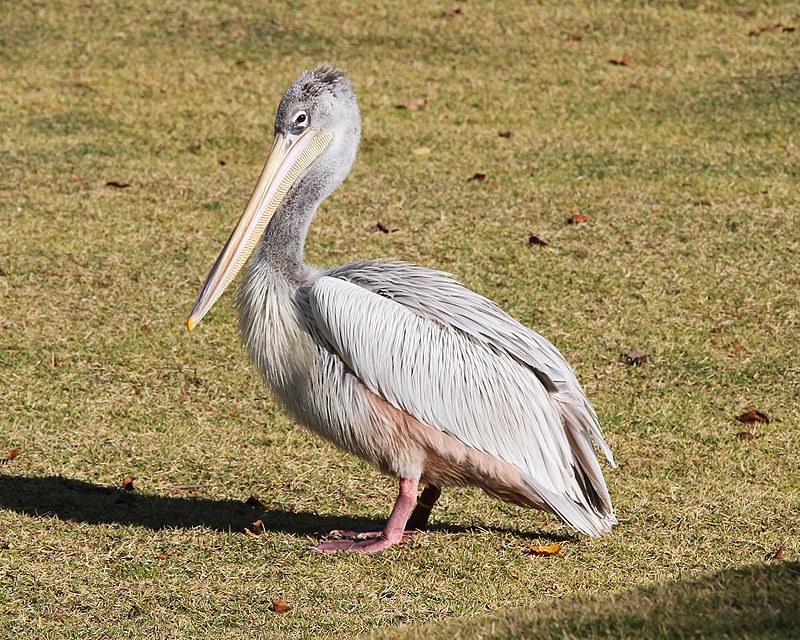
The Pink-backed Pelican is a beautiful bird of the pelican family, found in Africa and southern Arabia.
They are resident breeders that inhabit swamps and shallow lakes but were once seen in Madagascar as well.
It was formally described by German naturalist Johann Friedrich Gmelin back in 1789.
These birds have unique pink feathers on their backs which gives them their name along with grey or white heads with black wing tips.
They use their long beaks to scoop up fish from the water then drain out excess water before swallowing it whole.
The diet of these birds consists mainly of small fish like anchovies, sardines, and other types of fish they can find near the surface of rivers or lakes.
With its long wingspan ranging between 2 – 3 feet (60 – 90 cm), this species has adapted perfectly for gliding over bodies of water while searching for prey to eat.
Scientific classification:
| Kingdom | Animalia |
| Phylum | Chordata |
| Class | Aves |
| Order | Pelecaniformes |
| Family | Pelecanidae |
| Genus | Pelecanus |
| Species | P. rufescens |
7. Peruvian Pelican
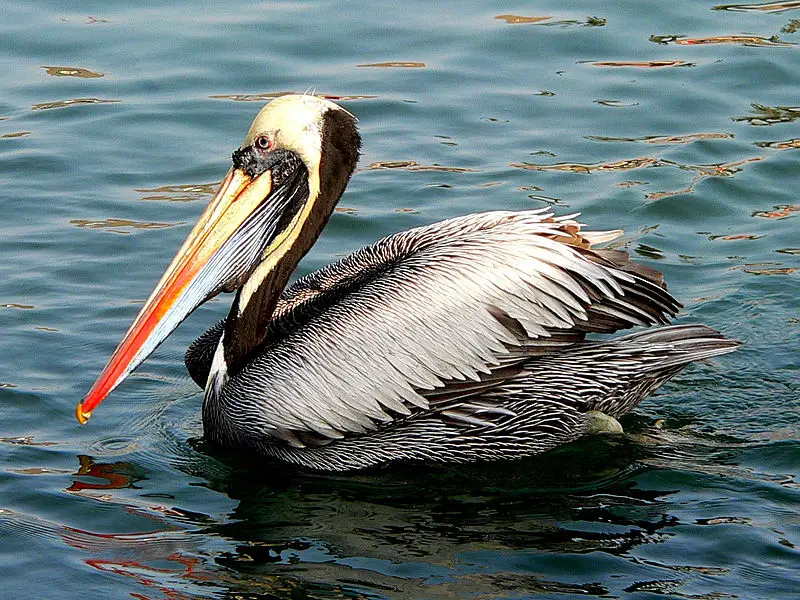
The Peruvian Pelican is a beautiful species of bird native to the western coast of South America. They have dark plumage with a distinctive white stripe that runs from their bill up to the crown and down both sides of their neck.
These majestic birds can be found in Chile, Peru, Ecuador, and sometimes even further south.
They live in colonies near coastal areas where they feed on fish which they catch by diving into the water or scooping them up off the surface using their large bills.
The population is thought to be decreasing due to overfishing, pollution as well as habitat destruction caused by human activities like mining, construction, and agricultural development.
Conservation efforts are needed if we want these magnificent animals around for future generations.
Scientific classification:
| Kingdom | Animalia |
| Phylum | Chordata |
| Class | Aves |
| Order | Pelecaniformes |
| Family | Pelecanidae |
| Genus | Pelecanus |
| Species | P. thagus |
8. Pelecanus Schreiberi

Pelecanus schreiberi is an extinct species of pelican that lived during the Early Pliocene epoch, 5.3 to 3.6 million years ago in North Carolina.
The bird was named after Ralph W Schreiber, a former curator of birds at the National Museum of Natural History.
It had a large body with distinct features from modern-day pelicans, suggesting it belonged to an ancient lineage not found today.
Its fossils were first discovered in Yorktown Formation deposits and have since been studied by scientists eager to learn more about its biology and evolutionary history.
Although Pelecanus schriberi has long gone extinct, it continues to fascinate researchers who wish to uncover more secrets about this strange prehistoric creature.
Scientific classification:
| Kingdom | Animalia |
| Phylum | Chordata |
| Class | Aves |
| Order | Pelecaniformes |
| Family | Pelecanidae |
| Genus | Pelecanus |
| Species | P. schreiberi |
Conclusion
Our exploration of the eight pelican species has unveiled the captivating world of these magnificent waterfowl. From the large and iconic American white pelican to the smaller and colorful brown pelican, these birds exhibit incredible diversity in size, habitat, and behavior.
Pelicans are not only awe-inspiring in their appearance, but they also play vital roles in maintaining the ecological balance of their respective environments.
As we conclude this journey, let us appreciate the importance of conservation efforts for these remarkable species. Habitat preservation, pollution control, and responsible fishing practices are crucial for ensuring the survival of these pelicans.
By raising awareness and actively participating in conservation initiatives, we can help protect these birds and the delicate ecosystems they inhabit, securing a future where pelicans continue to grace our world with their majestic presence.